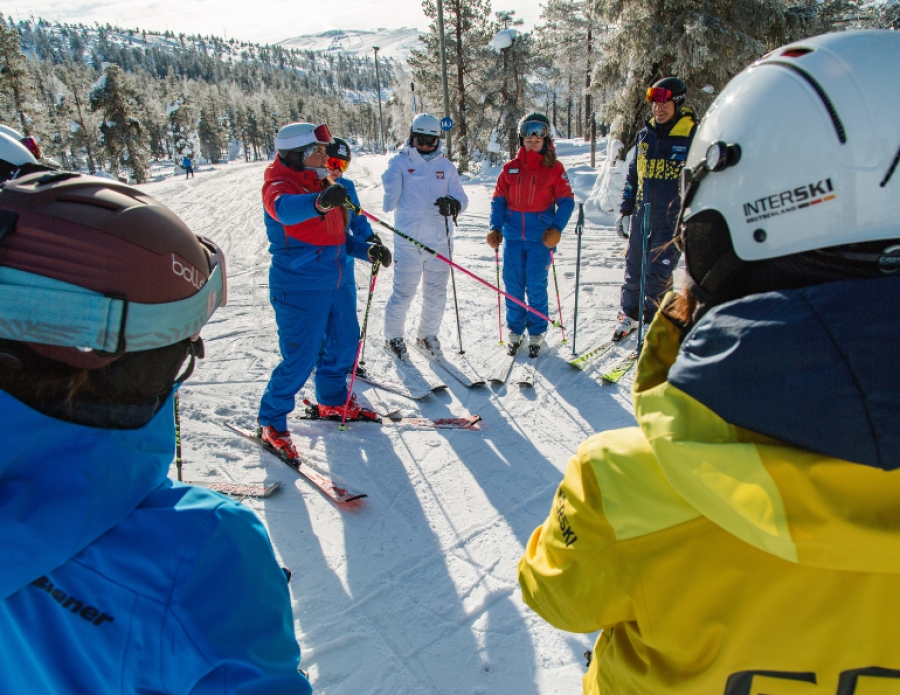A year ago in January, Peggy Hiller took the helm of the Professional Ski Instructors of America and American Association of Snowboard Instructors (PSIA-AASI). She pivoted to the world of snowsports instruction after more than two decades at Arapahoe Basin, Colo., where she began as human resources director before rising through the ranks to assistant GM and then VP of operations.
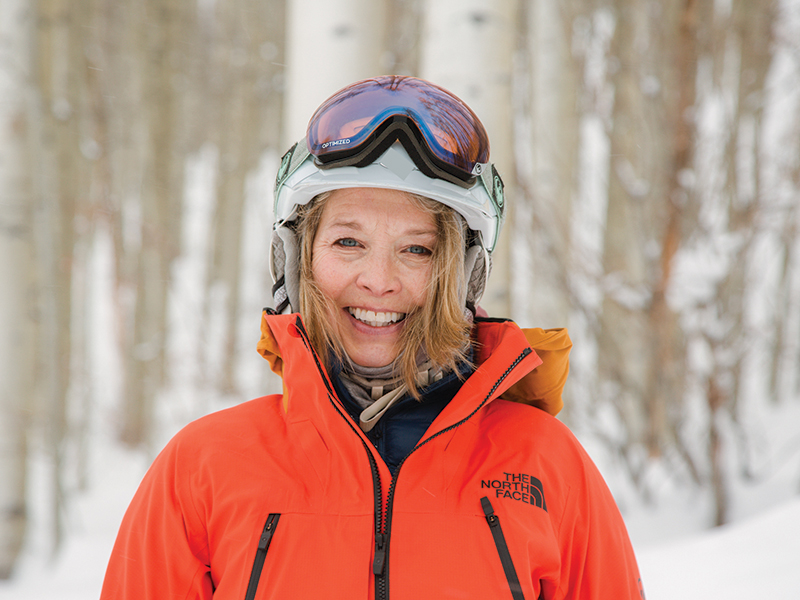 Peggy Hiller hailed from Arapahoe Basin, Colo., before becoming CEO of PSIA-AASI.
Peggy Hiller hailed from Arapahoe Basin, Colo., before becoming CEO of PSIA-AASI.
Earlier this winter, I jumped on the phone with Peggy to discuss the state of snowsports instruction, the organization’s value proposition, and her goals for the future of ski and ride schools and the industry. Full disclosure: I got my start in the industry as a ski instructor, and I’m currently an examiner and a board member for the PSIA-AASI Eastern Region, which has an affiliation agreement with Peggy’s national organization.
SAM: You come from a ski area operations background rather than a snowsports instruction background. How does that inform your role at PSIA-AASI?
Peggy Hiller: For 17 years at Arapahoe Basin, I had a lot of the skier services roll up to me as well as other various departments. When you’re around a resort for long enough, they keep giving you different things (laughs), and I was lucky enough back in 2005 to have the snowsports school roll up to me. It really opened my eyes to how complicated the snowsports school is at a resort.
I truly believe it’s the most complex operation to run at a resort because there are so many different factors and variables that play into its successful operation. It’s a pivotal piece of the guest experience. The snowsports instructor spends the most time with a guest out of any other employee at the resort. As lessons are predominantly taught to people who are at the lower ability level, first-timers through novice, it’s such a pivotal point to ensuring that we have growth at the resort and growth within the industry.
So, I’m really passionate about the guest experience happening at the snowsports school level, and the role of the instructor and the role of the school overall in operations.
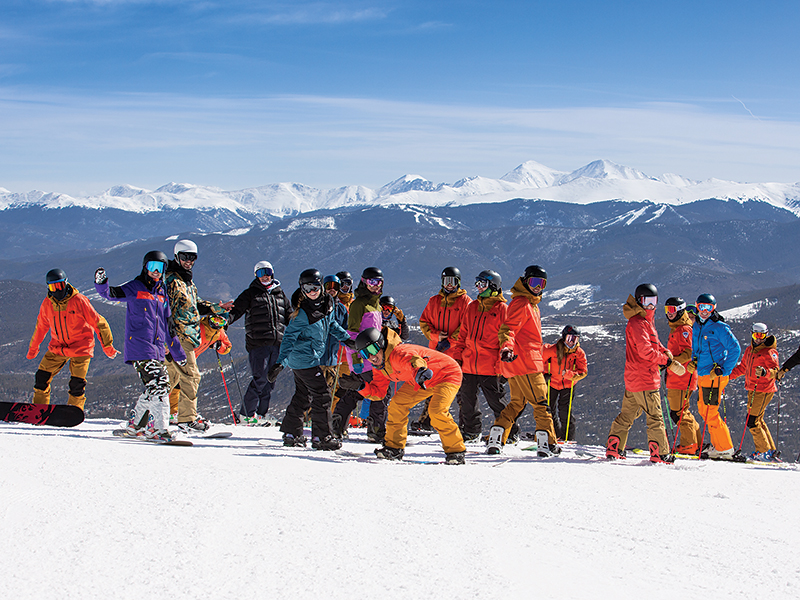 The PSIA-AASI National Team, above, is an educational resource available to all affiliated ski schools.
The PSIA-AASI National Team, above, is an educational resource available to all affiliated ski schools.
SAM: The most recent Kottke End of Season and Demographic Report showed lesson volume still lagging far behind pre-pandemic numbers. What do you think has contributed to that, and what might precipitate a turnaround?
Peggy: The model of the snowsports school lesson is very tricky to figure out in terms of cost to expense and getting a return. What is the outcome that, as an industry, we want from that lesson? If the major outcome we want is to a bottom line or this month or this budget, and we don’t see the value of people taking a lesson to the long-term future growth of the industry, that’s where it gets complex.
The new guest, that first-time guest in particular, or the guest taking a lesson is oftentimes the guest on the hill that is paying the most money to go slide on snow that day. And that’s a tough proposition if somebody doesn’t know if they’re going to like it. It’s particularly hard for a new family trying to break into the sport, or somebody who’s paying their own way.
The other tricky part is that instructors are employees that only get paid when there’s business. The lifts keep turning certain hours every single day, whether there’s a lot of skiers and riders or not very many, so lift operators have a consistent paycheck. Many times, the instructor does not have a consistent paycheck. So, there has always been a challenge between how do we appropriately price lessons to drive enough demand to give instructors enough hours and enough of a paycheck that they want to stay with us, and still meet budgeted expectations?
I think, back to your original question, the challenge for the industry is to weigh the business model of the lesson.
SAM: You mentioned the role snowsports schools play in growing the sport. How does PSIA-AASI contribute to this?
Peggy: An overarching goal is to work collaboratively, side-by-side with resort operators to get more people into lessons. It’s good for all of us. But that’s a tricky proposition. It takes so many stakeholders.
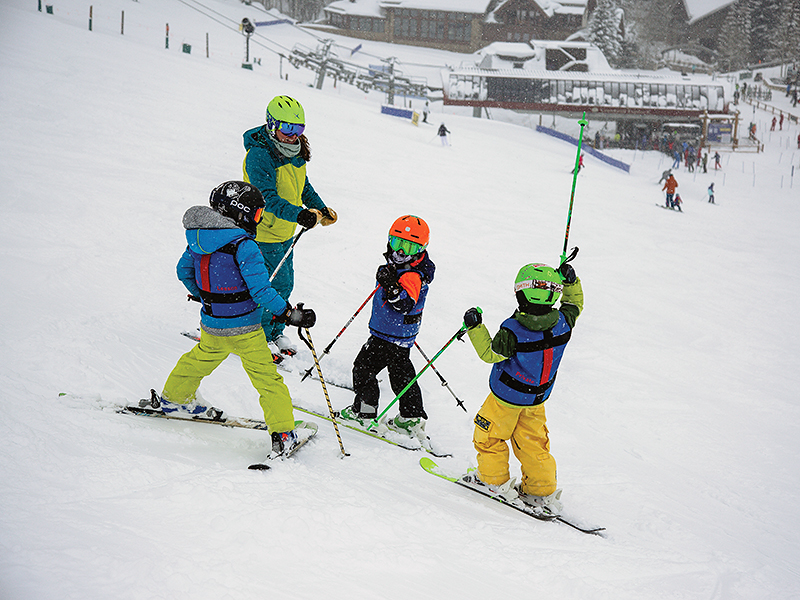 Instructors are frequently the spark that launches children into a lifetime love of skiing and riding.
Instructors are frequently the spark that launches children into a lifetime love of skiing and riding.
We have worked particularly hard in the last eight years or so on retooling our national [certification] standards for all our disciplines and incorporating a well-rounded approach to what makes a great instructor. We have a long history of really drilling into the technical side, but we’ve added pointed skills and standards around teaching and people skills, which makes for a better overall learning experience, and we hope will contribute to more people sticking with the sports.
SAM: With respect to those new people- and teaching-skills standards, has the organization ever considered expanding its scope to help ski areas more broadly with soft-skills training?
Peggy: That is something I am really interested in. Do we have a fully formulated plan? We’ve got a little bit more internal stuff to do, but I think that’s a huge opportunity. The people and teaching skills are discipline agnostic, which means a ski instructor and snowboard instructor learn the same skills, but it also means that it can go well beyond just somebody who’s working in an instructor role.
Our [resort] guests want to stay—their discretionary dollars stay—within our industry because they get great service. There’s a direct correlation with that and what people skills can do for all the guest-facing departments. And then I think teaching skills are important, too, whether you are supporting trainers at the resort or even rental shop employees who at times are teaching people that might be new to the equipment. So, it’s another piece of our value proposition that I hope we can explore. If you called me a year from now, I think we’d be much further along that path.
SAM: I will call you a year from now. I’ll be interested to hear more.
Peggy: (laughs) I knew I shouldn’t have said that.
SAM: Speaking of soft skills … In the SAM January 2024 edition of “Mountain Spy,” several ski school staffers came across as uncaring, dismissive—and even rude—when asked whether there were any lesson deals available for a first timer. What’s your take on that? Is there anything PSIA-AASI can do to change that attitude toward the first timer or discount seeker?
Peggy: There is a ton of pressure that is put on the snowsports school to turn a profit or hit a target budget. So, this is an example of the dichotomy of wanting to grow the sport and meet the bottom line: The person that is skiing the cheapest is the person whose done this for a couple years, while the person getting into the sport has the biggest expense.
When I worked at a resort, one of my favorite things was actually to answer guest calls. But to try to help folks find a package that would work, I could hear the deflation in their voice as I walked them through the cost of rentals, tickets, and lessons. I don’t want to reduce it all to money, but it is really important. I don’t like snarky service, and I do think there is always an opportunity to have a conversation with a guest. But it can be a difficult sell, especially when the guest doesn’t know how fun it is or when it is going to take a few days for it to get fun.
SAM: How did you think about PSIA-AASI’s value proposition before taking the CEO role, and how has your view of it shifted in your first year on the job?
Peggy: Before I started in this role, because I was close with our snowsports school director, I knew how much energy went into what PSIA-AASI does. But then, looking at other parts and pieces of the resort that I worked at, I saw people had no clue what PSIA-AASI does, and I knew there was a case to be made for improving PSIA-AASI’s value proposition, which also improves our awareness.
Now that I’m in entrenched in it, I’ve fallen in love with the education pieces. I didn’t realize the breadth and depth of the people and teaching skills and all the work that’s gone into advancing that guest service aspect of snowsports instruction.
The other big piece is how do we work in lockstep with the broader industry to grow the sport?
I think there’s a huge role for PSIA-AASI in the future of the industry. I think we need to drill down and figure out a way to get much better data on who is or isn’t taking a lesson, where are people taking lessons, where aren’t they, and up to what point (ability- and experience-wise)?
As some of our slopes have become more crowded and safety has become an issue, I think there’s an opportunity to positively impact that through guests taking lessons versus guests who are either self-taught or taught by someone who is not a professional, like a friend, a family member. From teenagers on up, the threat of injury is a big opponent to the growth of our sport. And I think part of the value proposition that PSIA-AASI has is the ability to impact all that.
SAM: I’ve read studies that suggest Gen Z is much more risk averse than previous generations, and we also have an aging demographic that is risk averse. So, I can see the opportunity for an organization that provides the education and skills to keep folks sliding safely on snow to get people involved and keep them in the sport by reducing the fear of injury.
Peggy: It’s interesting, a lot of times the ski industry compares itself with the golf industry, right? We talk a lot as an association about how people who want to improve their golf game will go take a lesson with a pro once a summer. Why aren’t more people as adults, especially, just getting a tune-up each winter with an instructor? That would help with safety, reminding ourselves, for example, where it’s safe to pull over when you’re stopping.
I took a lesson last year as I was entering this role because I wanted to see that guest side of the experience, and there were several things I learned that really took the strain and stress off my quads and knees. I was like, why didn’t I do this 10 years earlier?
If somebody stays in the sport longer because they’re having more fun, they’re reducing strain, that’s a good outcome of a lesson. It kind of gets back to that whole business model thing—the snowsports school should almost be seen as a loss leader. If we can keep people in the industry or at the mountain longer or coming more days, that’s good for all of us.
SAM: I’m sure that would sound quite radical to some.
Peggy: I know. I’m going to get myself in trouble here, but if you just think about all the capital investment that goes into a resort every year, the millions of dollars on this new restaurant, that new lift—and I’m not saying that’s not important. It is. It does move the needle—but investing in getting people into the sport, those dollars can go pretty far, too, in the long run.
SAM: You’d have to change the way you look at the return, right? Or where and when you’d expect to see the return. It’s an interesting proposition.
Peggy: Yes, and another piece to this is, people don’t ski alone. I believe in my heart—this is where the data is not there yet—that if you get one person into the industry, they are going to want to bring friends or future spouses or kids down the road. So, I really feel like the biggest thing we could do to grow the sport is figure out how to get more people into lessons.
SAM: What do you see for PSIA-AASI in the next 5-10 years?
Peggy: We are working hard as an association to be consistent in our processes and our offerings to meet the high expectations people have of us across the country. We’ve long been chopped up into regions. So that’s a huge internal focus for us that I think strengthens our value proposition. You can be confident that an instructor trained in one part of the country will have the same skills as an instructor trained in another part of the country, which will help with [ski area] training and recruiting.
Speaking of recruiting, I think we have a big role to play in bringing more engaged, passionate people into snowsports instruction. And I do have a desire to have the conversation with the resort operators, the GMs, on how we support somebody in either a part-time or full-time career as an instructor.
We are also hosting the Interski 2027 congress in Vail (Colo.), for the first time in the U.S. since 1968. Interski brings together the top instructors from across the globe to share teaching methodologies and best practices. We meet every four years, and I think having it meet here in the U.S. will provide a platform for a conversation about the value of hiring a professional instructor—no offense to YouTube. It’s an opportunity to change the conversation around taking a lesson. How do we go from the “ski bum” to the “ski pro”? To go back to the golf comparison, sometimes an instructor is considered a ski bum while a golf instructor is a golf pro.
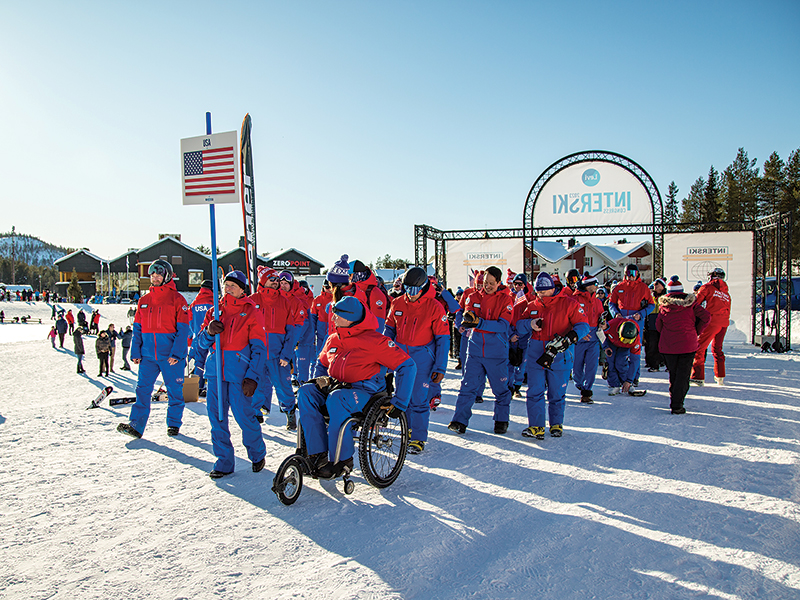 International events, such as last year’s Interski congress, provide fresh perspectives to PSIA-AASI and its National Team.
International events, such as last year’s Interski congress, provide fresh perspectives to PSIA-AASI and its National Team.
Snowsports instructors are paying money to get certified, and at times, those people investing the most into their profession are getting paid the least.
More generally, I would love to say, 5 or 10 years down the road that we’ve brought more folks into the sport. We haven’t talked about diversity, equity, and inclusion, but I think there’s an opportunity there. PSIA-AASI wants to be a leader with the industry in bringing more underrepresented populations and folks into the outdoors.
We want to be part of the future.





